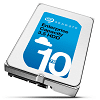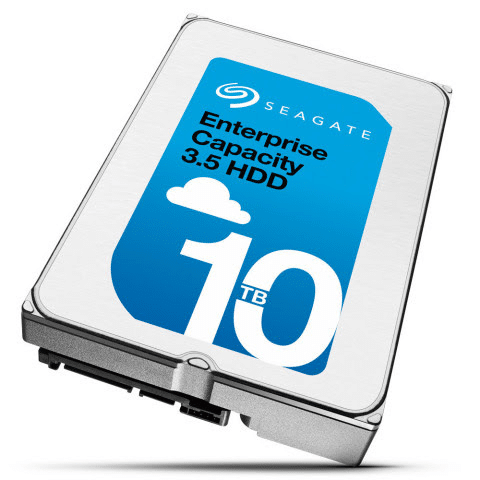
Seagate Technology has unveiled their first 10TB enterprise HDD, combining high capacity with low power consumption and low weight. Designed to meet the constantly growing storage requirements for both private and public cloud-based data centers, the Seagate Enterprise 3.5 Capacity HDD offers maximum storage capacity for easy system integration by using the standard 3.5-inch CMR design. The new drive also features an increased 2.5 MTBF and is available in both a 6Gb/s SATA and 12Gb/s SAS interfaces.
Leveraging seven platters and 14 heads, the Seagate Capacity Enterprise 10TB seals in helium to create a turbulence-free, near silent operation. This helps to decrease both friction and resistance on the platters, indicating that it delivers the industry’s lowest power/TB ratio, and weight specifications for a 10TB HDD. The Seagate drive also has 25% more density, which allows businesses significantly increase their PB per rack. Seagate has also upped the drive`s MTBF, which is now 2.5 million hours.
The new Enterprise Capacity drive uses advanced caching algorithms to improve performance and help cloud data center managers to increase the volume of data much faster. The drive also features Seagate’s PowerChoice technology, enabling the drive to help businesses manage and reduce the power and cooling costs during idle time. In addition, the PowerBalance feature is designed to optimize IOPS/Watt efficiency.
Availability
The Seagate Enterprise Capacity 3.5 HDD 10TB is currently shipping to select customers worldwide.
Sign up for the StorageReview newsletter

